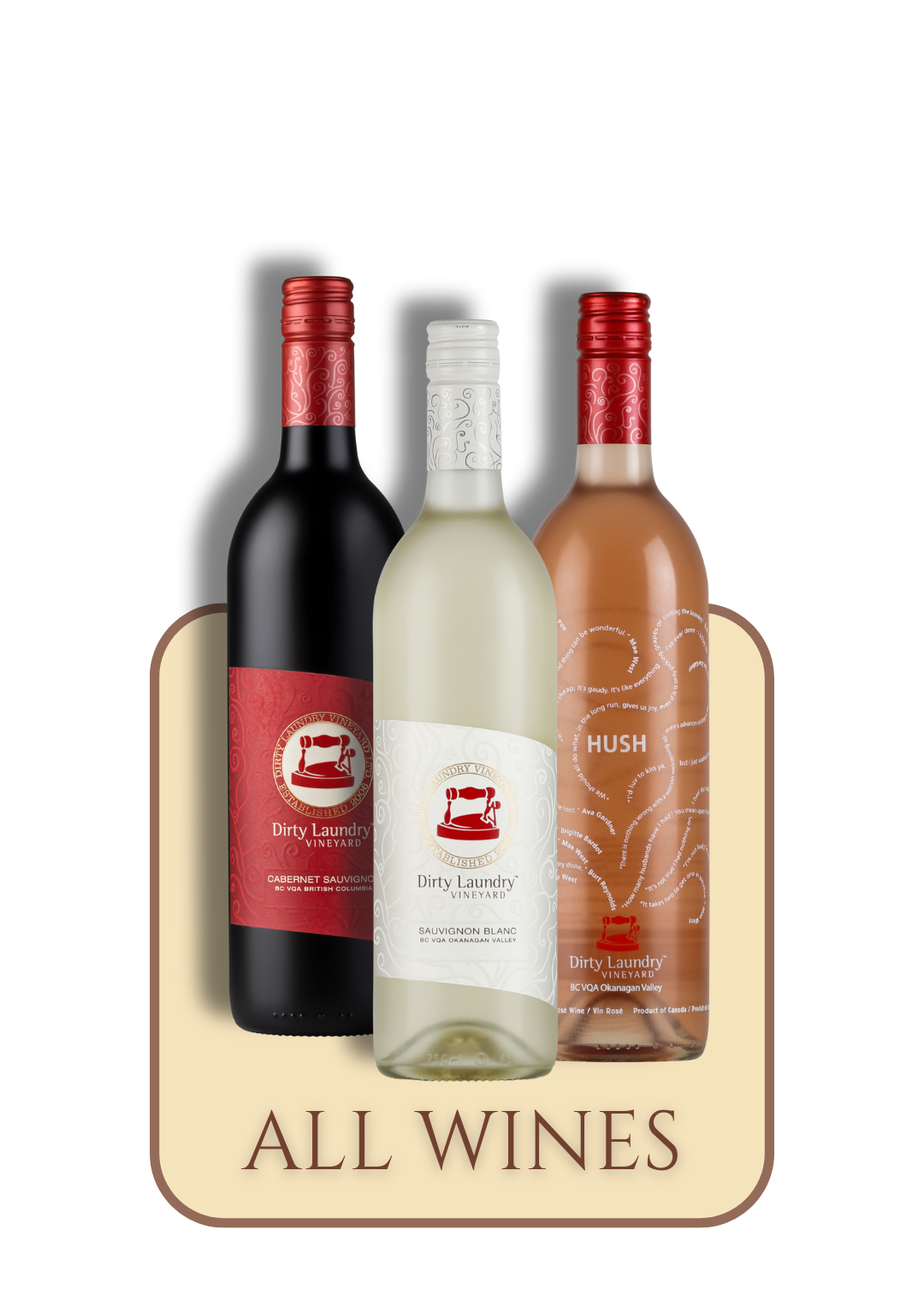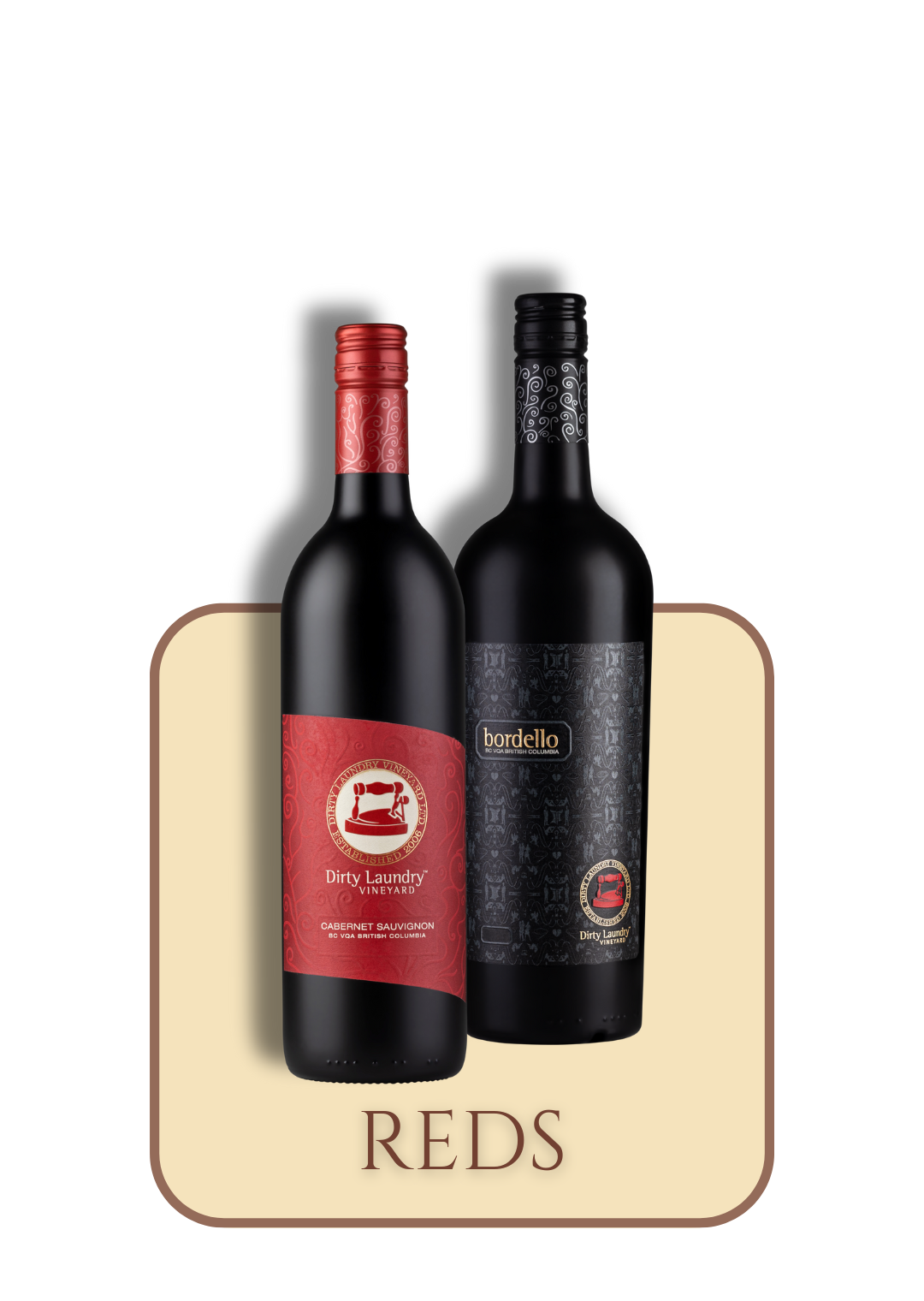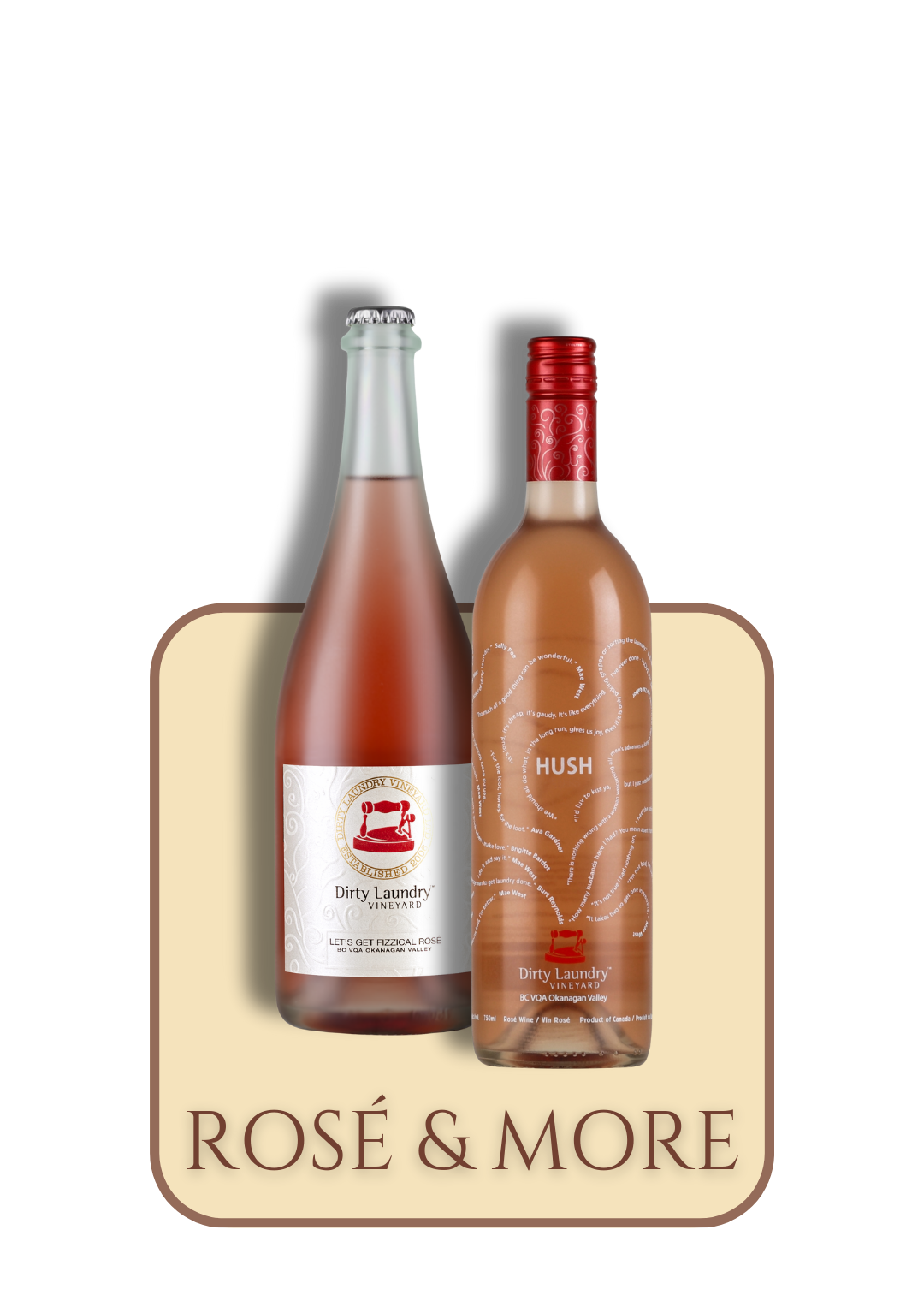
By Alia Etchison-Bone
•
April 24, 2025
Our country may be famous for maple syrup and hockey, but Canada’s wine regions are steadily gaining recognition on the global stage. From coast to coast, the True North boasts unique terroirs and climates that produce exceptional Canadian wines. For wine enthusiasts, exploring the vineyards of Canada offers a unique opportunity to immerse themselves in the art of winemaking, savour local flavours, and connect with the landscapes of Canada that give life to each bottle. Whether you’re a seasoned connoisseur or a curious beginner, this tour of renowned Canadian wine regions will help to inspire your next wine adventure! The Okanagan Valley, British Columbia Our very own Okanagan Valley is Canada’s premier wine region. With 200+ wineries stretching over 250 km, this area is known for its diverse microclimates, ranging from desert-like conditions in the south to cooler temperatures in the north. The Okanagan enjoys hot summers and long daylight hours, helping grapes ripen fully while maintaining acidity, which is crucial for balanced wines. These varied conditions allow for a wide array of grape varieties, including: Full-bodied reds (such as Dirty Laundry’s Merlot , Syrah , and Cabernet Sauvignon ) Lighter reds (like Pinot Noir or Dirty Laundry’s blend, Hush Red ) Crisp whites (such as our Chardonnay , Riesling and our white blend, Hush White ). The Okanagan Valley produces over 80% of BC’s wine and contributes a staggering $2.8 billion annually to the economy. Beyond the wine, the Okanagan offers stunning lake views, rolling vineyards, and a vibrant culinary scene. Pair your wine tasting with farm-to-table dining for an unforgettable experience. Niagara Peninsula, Ontario The Niagara Peninsula is synonymous with world-class ice wine, a Canadian specialty crafted from grapes frozen on the vine yielding intensely sweet and complex flavours. Located along the shores of Lake Ontario, the peninsula is divided into Niagara-on-the-Lake (warmer, better for Bordeaux-style reds) and the Niagara Escarpment (cooler, ideal for Pinot Noir and aromatic whites). This region - which includes over 90% of Ontario’s vineyards - benefits from a unique microclimate created by the lake’s moderating effects. This climate supports a variety of grape cultivars, including Vidal Blanc, Riesling, and Cabernet Franc. Visitors to Niagara can enjoy not only its renowned wineries but also the breathtaking Niagara Falls and charming towns like Niagara-on-the-Lake. Many wineries here offer tours, tastings, and events, making it a perfect destination for wine lovers and adventurers alike. Prince Edward County, Ontario A rising star in the Canadian wine scene, Prince Edward County received official VQA (Vintners Quality Alliance) designation in 2007, making it one of Canada’s youngest recognized wine regions. The area is known for its limestone-rich soils and cool climate, ideal for growing Burgundy-style wines, particularly Pinot Noir and Chardonnay. Thanks to its cool climate and high acidity grapes, PEC is also gaining recognition for its elegant sparkling wines, made using traditional Champagne methods. Unlike larger wineries in Niagara or the Okanagan, PEC is home to smaller, independent wineries, focusing on handcrafted, high-quality wines. The artisanal approach to winemaking and its boutique wineries create an intimate and unique wine-tasting experience, and many of the wineries have onsite restaurants, farm-to-table dining, and local cheese pairings, making it a top destination for food and wine lovers. In addition to its wines, PEC is a hotspot for art, food, and nature. The region’s vibrant cultural scene and picturesque landscapes make it a must-visit for anyone seeking a blend of wine and relaxation. Annapolis Valley, Nova Scotia The Annapolis Valley in Nova Scotia is a hidden gem for wine enthusiasts. Known for its crisp whites and sparkling wines, this maritime region benefits from the cool Atlantic breezes and fertile soils. While international varieties like Chardonnay and Pinot Noir are grown, the region is known for cold-hardy hybrid grapes like L’Acadie Blanc, Seyval Blanc, and Marquette. The area is also recognized for its traditional-method sparkling wines, with some producers winning international awards. Wine touring in the Annapolis Valley is enhanced by its coastal beauty, historic towns, and local seafood. Enjoy oysters or lobster alongside a glass of Tidal Bay - a fresh, aromatic white wine that perfectly captures the essence of Nova Scotia’s terroir - for an authentic East Coast pairing. Emerging Canadian Wine Regions to Watch While the Okanagan, Niagara, PEC, and Annapolis Valley are the stars of Canadian winemaking, other regions are making their mark. Quebec’s Eastern Townships are gaining attention for their sparkling wines and ciders. Meanwhile, British Columbia’s Fraser Valley , Similkameen Valley and Vancouver Island offer boutique wineries that are pushing the boundaries of innovation. In addition, watch for more wines coming from the Prairie provinces in the coming years. While Alberta and Saskatchewan aren’t traditional wine regions, winemakers are experimenting with cold-hardy hybrid grapes like Frontenac and Marquette and wineries in these areas are also producing fruit wines and meads, gaining attention for their creativity. Choose the Right Canadian Wine Region to Visit To choose which Canadian wine region to visit, consider the following: Wine Preferences – If you love bold reds and diverse varietals, the Okanagan Valley is an ideal region to visit. Prefer crisp whites and ice wines? Head to Niagara Peninsula or Annapolis Valley. Scenery & Activities – For lake views and outdoor adventures, the Okanagan Valley is perfect. If you enjoy charming towns and historic sites, Niagara or Prince Edward County offer rich experiences. Boutique vs. Large-Scale Wineries – PEC and Annapolis Valley have small, artisanal wineries, while Niagara and the Okanagan Valley offer both boutique and well-established vineyards. Food & Culture – PEC is great for food lovers and artists, while Annapolis Valley is perfect for seafood pairings. Niagara offers culinary excellence alongside its wine culture. The Season – The timing of your visit can significantly impact your experience. At the height of summer, wineries will be busier and you may have to fight with droves of other tourists during your visit. Harvest season - typically late summer to early fall - is a lively time with festivals and vibrant vineyard activity. The off-season, when the tourists have gone home, can offer quieter surroundings and more personal attention at wineries, however the opening days and hours may be significantly reduced. Why Canadian Wine Matters Canada’s wine industry reflects its diverse landscapes, climates, and cultures, with each region telling a unique story through its wines. As sustainable practices and experimental techniques continue to evolve, Canadian winemakers are shaping a bright future. As a consumer, you can help support the Canadian wine industry by buying Canadian wine. Not only will purchasing Canadian wine help sustain local wineries, farmers, and communities, your support helps ensure the wine industry can continue to create jobs and contribute to tourism and agriculture. In addition, buying Canadian wine has the following impact: Sustainability & Low Carbon Footprint – Local Canadian wines require less transportation compared to imported bottles, reducing environmental impact. Many Canadian wineries also prioritize sustainable and organic farming practices. Unique & High-Quality Wines – Canada’s diverse climates and terroirs create exceptional wines, from world-renowned ice wines to cool-climate varietals like Pinot Noir and Riesling. Preserving Canadian Wine Culture – Choosing Canadian wines supports the growth of the country’s wine industry, encouraging innovation, craftsmanship, and global recognition. Perfect Pairings with Local Cuisine – Canadian wines are crafted to complement regional foods, enhancing the experience of local farm-to-table dining. Exploring Canada’s wine regions offers more than just great wine. It’s a chance to experience the heart and soul of a place, connect with its traditions, and create lasting memories. Whether you're planning your next wine tour or simply looking to try something new, Canadian wines offer a world of discovery. Cheers to exploring the flavours of the True North!
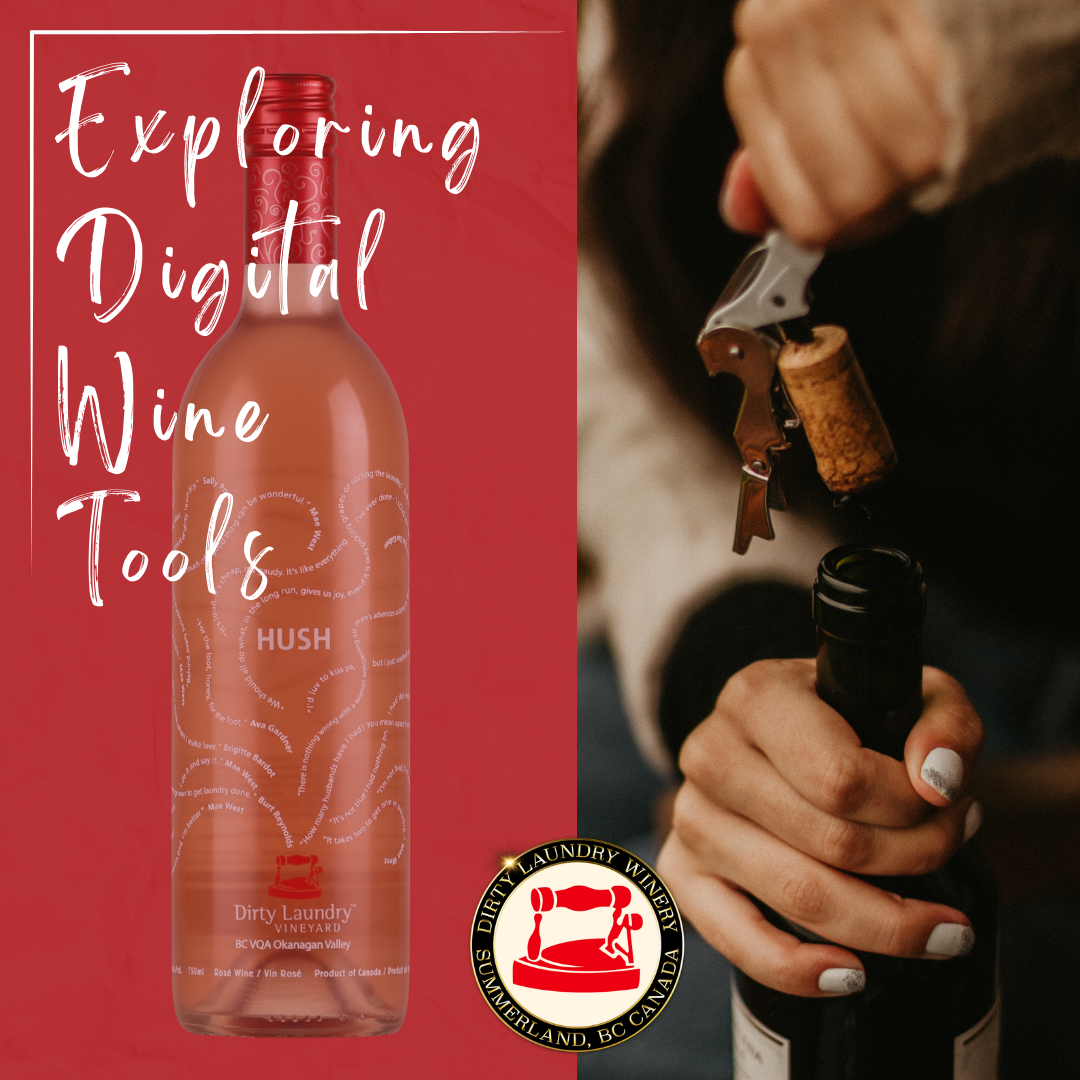
By Alia Etchison-Bone
•
March 20, 2025
The digital age has brought a wealth of tools to wine lovers, transforming how they discover, enjoy, and share their passion for wine. From mobile apps to sophisticated gadgets, these are some of the top digital tools that are elevating the wine experience for enthusiasts. 1.Wine Apps Wine apps - with their user-friendly interfaces and advanced features - have revolutionized how wine enthusiasts explore, track, and enjoy their favourite bottles, making it easier to navigate the vast world of wine. They provide knowledge, organization, and inspiration, empowering users to: Learn about new wine regions and discover new wines that match their tastes. Keep track of favourite bottles and tasting notes. Discover the best wine and food pairings. Manage and optimize wine collections. Make informed buying decisions with price and availability insights. How Do Wine Apps Work? Wine apps typically rely on a combination of label-scanning technology, extensive wine databases, and community input. Here’s how they function: Label Recognition : Many wine apps allow you to scan wine labels to quickly retrieve information about the wine, including details about its producer, varietal, region, and reviews. This feature helps users identify wines they encounter in stores, restaurants, or tastings. Tasting Note Tracking : Wine apps allow users to record personal impressions of the wines they try, noting aromas, flavours, and overall enjoyment. This helps build a personalized wine journal. Recommendations : Based on user preferences and past ratings, wine apps often suggest new wines to try or offer food pairing ideas. Wine Collection Management : Some wine apps allow you to track your own personal wine inventory, including the number of bottles, storage location, and optimal drinking windows, helping to maintain an organized wine cellar . Community Insights : Wine apps often include reviews and ratings from other wine lovers, providing a collaborative platform for discovery and learning. Price and Availability : Many wine apps show where you can buy a wine and at what price, making it easy to find and compare options. The Best Wine Apps for Every Enthusiast These are some of the best wine apps currently available: 1. Vivino Features: Label scanning, community reviews, personalized recommendations. Best For: Casual wine drinkers and those new to wine exploration. 2. CellarTracker Features: Comprehensive cellar management, detailed reviews, and tasting note tracking. They boast over 10M wine reviews! Best For: Collectors and serious wine enthusiasts. 3. Delectable Features: Label recognition, expert reviews, and social sharing. Best For: Socially inclined wine lovers who want expert insights. 4. Wine-Searcher Features: Price comparisons, availability tracking, and tasting notes. Best For: Bargain hunters looking for the best value. 5. VinoCell Features: Advanced cellar management and detailed tasting note features. Best For: Connoisseurs with extensive wine collections . 2. Smart Wine Gadgets Wine lovers know that there's more to enjoying a good bottle than just the drink itself. It's the experience, the ambiance, and of course, the tools that elevate every sip. Whether you’re a casual drinker or a connoisseur, there’s a gadget designed just for you. Coravin Systems The Coravin system is an innovative wine preservation system that allows you to pour wine from a bottle without removing the cork. The device features a thin, hollow needle that gently pierces the cork without damaging it. As wine is poured, the system injects inert argon gas into the bottle to replace the displaced wine, preventing oxidation. After the needle is removed, the natural elasticity of the cork seals itself, preserving the wine. This technology is designed to keep the remaining wine fresh for weeks, months, or even years. It’s particularly popular among wine enthusiasts, collectors, and professionals who want to enjoy a glass of wine without committing to opening an entire bottle. Smart Wine Coolers For the true wine enthusiast, a smart wine cooler is an investment in preservation, convenience, and experience. It takes the guesswork out of wine storage, using advanced technology to create the ideal environment for your bottles. Key Features of a Smart Wine Cooler: Precise Temperature Control : Smart wine coolers allow you to set and maintain specific temperatures for different types of wine (reds, whites, and sparkling). They ensure your wine stays at the perfect serving temperature, whether you're storing it for the long term or just chilling a bottle for tonight. Humidity Management : Proper humidity levels are crucial for preserving the cork and preventing oxidation. Many smart coolers come with built-in humidity control, keeping the air in your cooler at the ideal moisture level to maintain the integrity of your wine. App Connectivity : One of the standout features of smart wine coolers is the ability to control and monitor the cooler remotely via a smartphone app. You can adjust the temperature, set alerts for fluctuations, or even check the status of your cooler while you're out of the house. Wine Tracking and Inventory : Some advanced models include built-in sensors and RFID technology that can track and catalog your wine collection. The app may allow you to scan the label or input wine details, creating a digital inventory. You’ll know exactly what wines you have, their optimal drinking windows, and when it's time to restock. Energy Efficiency : Smart coolers are often designed to be energy-efficient, running quietly and using minimal power while keeping your wine at the perfect temperature. Alerts and Notifications : If there’s any fluctuation in temperature or humidity, your smart cooler can send an alert to your phone, giving you peace of mind. Some even allow you to program notifications for when a wine is at its peak drinking time. Wine Decanters with Aerators A wine decanter is a vessel used to hold and serve wine, typically made of glass or crystal. Its primary purpose is to aerate wine, allowing it to "breathe" by exposing it to oxygen, which can enhance its aroma and flavour, and improve overall drinking experience. Decanters are particularly beneficial for red wines and older vintages, as they can help soften tannins and remove sediment. With traditional decanting, you may need to wait anywhere from 30 minutes to several hours for the wine to reach its peak. Aerators , on the other hand, are devices designed to introduce air into the wine more rapidly, speeding up the decanting process. When these two elements are combined you get a tool that does the job of both decanting and aerating in one seamless process, enhancing the wine's flavours immediately as you pour it. The result is wine that is instantly smoother, more aromatic, and better balanced. Decanters with aerators come at a range of different price points starting at around $50 , with electric dispensers models starting a little higher, but some high end brands can cost several hundred dollars. Wine Dispensing Systems Digital wine dispensing systems are innovative devices that allow you to pour wine in a controlled, efficient, and convenient manner. These systems typically include an array of wine bottles stored in a temperature-controlled environment. With a simple digital interface, users can select their wine of choice and dispense a precise pour. The digital system tracks each pour, manages wine inventory, and even preserves opened bottles using inert gases like argon, preventing oxidation, keeping it fresh and flavourful for extended periods. Whether you're a wine bar owner, a restaurant manager, or a wine enthusiast at home, these systems bring convenience, innovation, and enhanced wine enjoyment to the table. Conclusion Digital tools have transformed the way we interact with wine, offering convenience, knowledge, and community at the tap of a screen or click of a button. Whether you’re exploring wines through an app, or preserving and enjoying bottles with smart gadgets, these innovations ensure there’s always more to learn and enjoy. Embrace these tools to enrich your wine journey and deepen your appreciation for the art of winemaking.
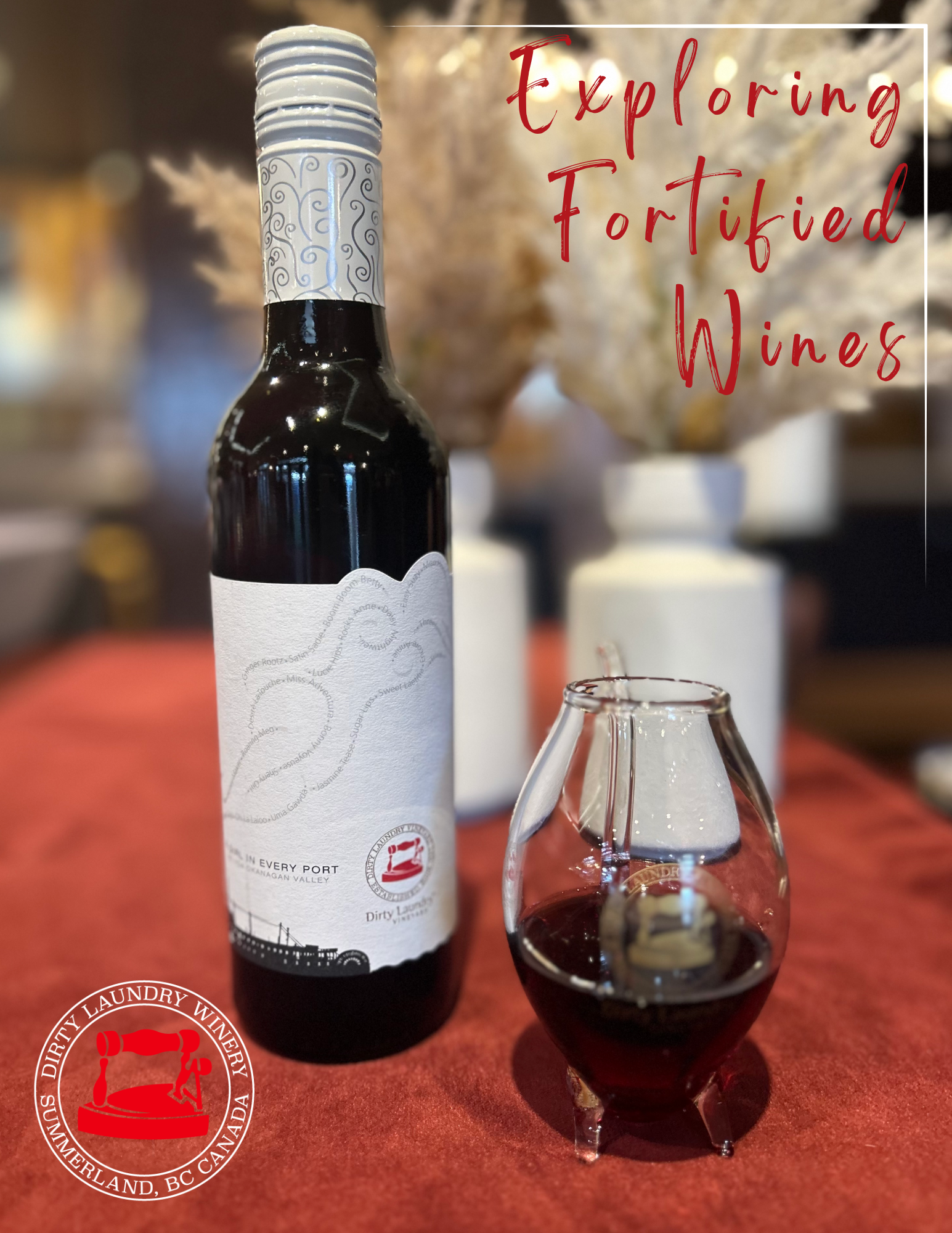
By Alia Etchison-Bone
•
February 20, 2025
Fortified wines have long been celebrated for their depth, complexity, and versatility. Whether you’re enjoying a glass by the fire, pairing it with dessert, or elevating your favourite cocktail, fortified wines offer something for everyone. Let’s dive into the world of fortified wines, exploring the iconic styles of Port and Sherry, plus a few of the lesser known fortified wine varieties. What Are Fortified Wines? Fortified wines are a category of wine that have been enhanced with a distilled spirit, typically grape brandy, during or after fermentation. They are known for their rich, concentrated flavours, making them suitable for sipping, pairing with food, or using in cocktails and cooking. Key Characteristics of Fortified Wines: Higher Alcohol Content: The boiling and condensing of the spirit during distillation increases the alcohol content. Fortified wines typically have an ABV between 16–22% - higher than regular wine due to the addition of spirits. Diverse Styles: Depending on when the distilled spirit is added during the winemaking process, the resulting wine can be sweet or dry with the middle-ground of medium-sweet or medium-dry covered in virtually all types of fortified wine categories. Adding the spirit mid-fermentation kills off the yeast and results in a sweeter fortified wine due to the larger amount of residual sugar left behind. If the spirit is added when the fermentation process has taken place, a higher percentage of the sugar has been broken down by the yeast, resulting in a drier fortified wine. Longevity: The practice of fortifying wine began in the Mediterranean region in the 13th century. It was popularized in the 17th century and became widespread by the 1840s due to the fact that the fortifying process helped to preserve and stabilize wine. This made the wine more robust and long-lasting which was perfect for long sea voyages when previously wine would spoil due to exposure to oxygen, bacteria, and fluctuating temperatures. Complex Flavours: Fortified wines offer a symphony of complex flavours that range from nutty and toasty notes, like almonds and caramel, to rich dried fruit tones, such as raisins, figs, and prunes. Their profiles often include warm spices like cinnamon and clove, and earthy and herbal undertones. These layers of flavour make fortified wines exceptionally versatile and deeply satisfying Portuguese Port Port wine, produced primarily from red grapes grown and fermented in the upper Douro Valley in northern Portugal, is arguably the most famous fortified wine, with a sweet, rich flavour, perfect for pairing with blue cheese, chocolate desserts, or nuts. Types of Port: Ruby Port: The most extensively produced port, ruby port is made using red grapes and is bright and fruity. It is typically aged for a shorter period and in tanks made of stainless steel to prevent oxidative aging and to preserve its rich ruby colour. At Dirty Laundry, we are proud to produce a ruby port-style wine made from a blend of Merlot and Pinot Noir that has been aged for 3 years and fortified with Alberta grain spirits. You will enjoy aromas of ripe fig, prunes and cardamom, with stewed cherries, ripe plum and hints of cinnamon and nutmeg on the palate, and a balanced and sweet finish. Tawny Port: This style of port uses red grapes but is aged in wooden barrels, exposing it to gradual oxidation and evaporation until a golden-color is obtained resulting in a nutty, caramelized flavour. Tawny port is blended in such a way that the finished product is a mixture of ages. Vintage Port: This style of port is made entirely from the grapes of an exceptional declared vintage year. It is typically aged in barrels initially, but then requires further aging of 10-40 years in the bottle. Vintage port is a collector’s favourite. White Port : A lighter style of port made in a wide variety of styles from dry to very sweet, white port is often enjoyed as an aperitif. Spanish Sherry From the sun-drenched region of Jerez in Spain comes Sherry, a fortified white wine with an incredible range of styles, from bone-dry to lusciously sweet. Sherry is produced using the solera aging system, which ages the wine over a period of at least 3 years. A series of 3–9 barrels are stacked vertically and the method involves moving 5-30% of the wine down from one barrel into the next one which blends wines of different vintages to ensure consistency and complexity. Different styles of sherry require a different number of transfers. At the end of the series, a portion of the final barrel is bottled and sold. Solera means “on the ground”, indicating that the bottom row contains the oldest Sherry. Types of Sherry: Fino (15-17% ABV): Light, dry, and crisp with a hint of almonds. Amontillado (15-17% ABV): Starts as a Fino but develops richer, nuttier flavours with age. Oloroso (17-22% ABV): Full-bodied, dark, and aromatic. Pedro Ximénez (15-22% ABV): Intensely sweet and perfect for drizzling over ice cream or sipping slowly. Lesser Known Fortified Wine Varieties While Port and Sherry often take the spotlight in discussions about fortified wines, there are several lesser-known varieties that offer unique flavours and cultural significance. These hidden gems are worth exploring for wine enthusiasts seeking something different: Madeira is a fortified wine from Portugal’s Madeira Islands, renowned for its caramelized, nutty flavours and remarkable longevity. It undergoes a unique aging process involving heat, which enhances its complexity. Its specific styles like Bual and Sercial showcase Madeira's diversity - Bual offers medium-sweet flavours of toffee and dried fruit, while Sercial is the driest Madeira, with crisp acidity and notes of citrus and almonds. Vermouth is an aromatic fortified wine infused with botanicals like herbs, spices, and citrus. Originating in Italy and France, it comes in dry and sweet styles and is widely used in cocktails, such as the Martini or Negroni, as well as enjoyed on its own as an aperitif. Marsala hailing from Sicily is a fortified wine with a rich history and versatility. Traditionally used in cooking, it also makes delightful sipping wine. Marsala comes in dry (secco), semi-dry (semisecco), and sweet (dolce) styles, with flavour notes of caramel, vanilla, and dried fruits. Commandaria , often called the world's oldest named wine, originates from Cyprus. Made from sun-dried grapes, this sweet fortified wine boasts flavours of honey, dried figs, and spices. Its history dates back to the Crusades, and it remains a symbol of Cypriot winemaking heritage. Rancio Sec is a fortified wine from southern France and parts of Spain, known for its bold, oxidative character. The name "Rancio" refers to the wine's intentional exposure to air and heat, which develops unique flavours of roasted nuts, dried apricots, and umami. Pineau des Charentes from France's Cognac region and often enjoyed as an aperitif is a blend of fresh grape juice and Cognac. The result is a sweet, aromatic fortified wine with notes of honey, stone fruit, and floral undertones. These lesser-known fortified wines reveal the breadth of styles within the category, each with its own story and flavour profile. How to Enjoy Fortified Wines Fortified wines are incredibly versatile and can be enjoyed in various ways: Sipping : Serve in small glasses to appreciate their concentrated flavours and aromas. Pairing : Fortified wines can complement a wide range of dishes: Port : Pair with blue cheese, dark chocolate, or nuts. Sherry: Match dry styles with tapas, olives, or seafood; sweet Sherry works with desserts or creamy cheeses. Madeira : Enjoy with roasted meats, mushrooms, or rich desserts. Vermouth: Serve with charcuterie, olives, or as a pre-meal aperitif. Cocktails : Fortified wines are excellent bases or modifiers in cocktails: Port: Try in a Port & Tonic with ice and a citrus garnish. Sherry: Use in a Sherry Cobbler with sugar, fruit, and crushed ice. Vermouth: Essential in classics like a Martini, Manhattan, or Negroni. Include in cooking: Fortified wines are fantastic in recipes: Sherry: Use for soups, sauces, or braised dishes. Madeira: Adds depth to gravies and reductions. Vermouth: Can enhance marinades and risottos. Storing and Serving Tips Fortified wines have a longer shelf life than regular wines due to their higher alcohol content, but they still benefit from proper storage. Keep them in a cool, dark place, and once opened, consume within a few weeks to maintain their optimal flavours. Serve the fortified wines at the right temperature. Dry Sherry and Vermouth are best chilled. Sweet fortified wines, like Tawny Port or Madeira, are often served slightly below room temperature. As a result of deep wood aging, many fortified wines will benefit from decanting and aeration before serving. Use the right glassware. A smaller glass (like a copita or port glass) concentrates the aromas and flavours. For cocktails, use traditional glassware such as a coupe or highball. Conclusion Fortified wines offer a world of flavours, histories, and traditions waiting to be explored. Whether you’re savouring a vintage Port, experimenting with a Sherry cocktail, or discovering a lesser-known fortified wine, these beverages invite you to slow down and appreciate the artistry behind every bottle. Cheers to the journey!

